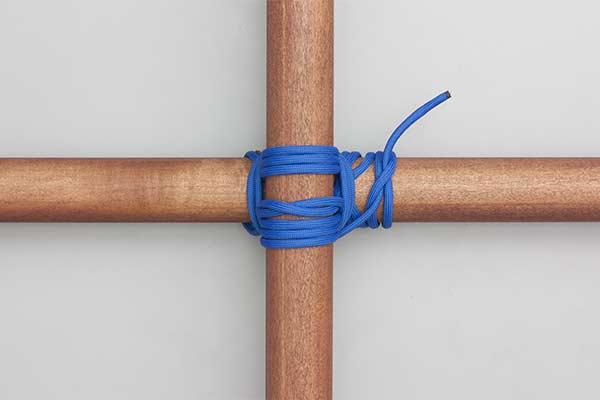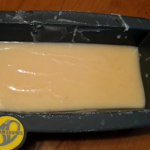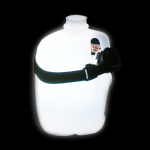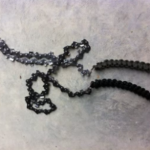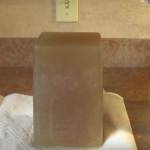How to Tie a Square Lashing in a Few Simple Steps
Square lashing is a simple and effective method to use to connect pieces together in the form of a square. You see this type of lashing in a variety of different applications, from building walls, frames and supports to making boxes and even rudimentary furniture. It is generally used to connect branches, dowels, posts or other cylindrical items together, and it is a very important technique to become familiar with. The following steps illustrate one method that is easy to learn, and all it takes is a little bit of practice to get the technique down.
Getting Started
You will need some cordage along with two cylindrical objects. It can be anything from a broom handle to a pair of branches that have similar dimensions. We’ll practice on these two pieces in order to get a feel for how to tie down joints and corners for now. You can then repeat the process whenever you need to join four pieces together or link completed sections together. That being said, take material that is easy to handle, such as two broomstick segments that are a couple of feet long each. They’re light, and it will be easier to hold them in position while lashing them together.
Make the Clove Hitch
The first step is to make a clove hitch around one of the poles near the center. To do this, take your cordage and wrap one end around the pole by starting on top and going underneath. Pull the end from the bottom over the cordage on top of the pole from right to left. Next, loop it around the pole from top to bottom on the left side. Finally, feed the end that emerges from the bottom beneath the loop that you just made on top. Pull the end through, and the hitch will tighten. You want to have the end stick up about two to three inches when you’re done. The longer, working end of the cordage should be extending from the bottom.
Attaching the Poles
The next step is to place the pole with the clove hitch beneath the other one. Center them so they form a perfect cross, and slide the clove hitch next to the vertical pole. Next, take the small end piece and place it over and across the vertical pole at a 45 degree downward angle to the right. Place the smaller piece atop the longer one and gently pull on both until they are slightly taut. Pull them at a 45 degree angle down and to the right of center so that the ends bisect the bottom right quadrant of the cross. Twist these to pieces together until the shorter one is fully-wrapped with the end sticking out from beneath the final twist.
Next, pull the twist and longer end of the cordage beneath the horizontal pole on the right side of where the poles intersect. This will help to secure the shorter piece with the longer one by compressing them beneath the horizontal pole. Next, take the cordage and pull it over the vertical pole from right to left. Tighten it before placing the cordage beneath the horizontal pole on the left side. Tighten again before wrapping over the vertical pole at the bottom of the joint. Pull again before placing the cordage beneath the horizontal pole on the right side. Pull and place the cordage over the vertical pole on top of the joint and repeat the process until you’ve made at least three complete wraps.
When you make the last pass, and the cordage is on top of the vertical pole below the joint, wrap it underneath the pole going in the opposite direction. Pull it over the horizontal pole on the left side before pulling it beneath the vertical pole on top. Bring it over the horizontal pole on the right before pulling under the vertical one on the bottom. Make at least two passes before having the cordage exit the bottom vertical pole and over the top left horizontal one. Loop it around the horizontal left pole and side the cordage through the top of the loop when you’re done. Loop it one more time before sliding the cordage upward beneath and between the top loops you’ve just made. Pull the end to secure and trim any excess cordage.
The square lashing is a time-tested method for securing these types of joints, and it’s been used for centuries. Try it out for yourself, and you will see how easy it is to get the hang of things after a couple rounds of practice. Knowing how to make this lashing can help you to secure more things together in the field while using as little cordage as possible.


